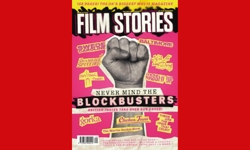Video is absolutely crucial to Condé Nast’s digital strategy going forward. Just ask Condé Nast UK head of digital Wil Harris, who predicts video will be one of the most important digital revenue drivers for the company in 2015. And it's not hard to see why.
In the quarter November 2014 to January 2015, Condé Nast UK reported 12.2m unique users per month accessing its websites for titles such as Vogue, Glamour and GQ – up from 8.7m on the same period a year earlier. Overall digital revenues, meanwhile, were up 17% in 2014 on 2013, and 2015 performance so far points to a 25% rise on 2014 by the end of this year.
Mobile has been a major factor, says Harris, who joined the business in March 2014 from Channel Flip, one of Europe’s largest online multi-channel networks which he co-founded then sold to Shine Group in 2012. “In just the year since I joined, the proportion of our online traffic driven by mobile has risen from 35-40% to 60-65%,” he says. This is in line with an overall shift in consumer behaviour towards mobile internet access via smartphone and, in tandem, a marked increase in video consumption online.
“Those watching video online now in the greatest quantity are millennials. To stay culturally relevant, Condé Nast must attract a new generation of audience and looking at what’s happening beyond our own immediate business, it is clear that video is the way to do this,” he explains.
“We see video as the key way people will interact with our brands over the next few years so a current priority is getting that video strategy right, with the right range of content and the right platforms – video that doesn’t simply replicate the print titles that we publish or the web content we already have, but that re-imagines our magazine brands.”
Digital initiatives
Harris has had a busy first year at Condé Nast during which time he has driven forward the company’s efforts to integrate digital across all areas of the business – an on-going strategy introduced a little over eighteen months ago by his predecessor, Jamie Jouning, which began with digital ad sales decentralised to individual brand teams (though a one-stop ‘multi buying’ point still exists for those advertisers that still want it). He has also overseen the development of new ad formats; an Instagram push; and an ambitious project which began earlier this year to re-build Condé Nast UK’s entire CMS to accommodate a new native advertising platform.
The CMS Condé Nast has been using was written three to four years ago – a lifetime in the digital world, Harris explains: “These days, a self-written CMS is almost becoming a competitive advantage enabling you to publish content more quickly – as BuzzFeed’s success neatly shows. We began work on the new CMS this January and hope the first iteration will be out in August with a ‘mobile first’ publishing platform catering for everything we need around social, sharing and search-ability across all our brands.”
He adds: “Yes, we could have spent eighteen months on it until it was perfectly polished, but in today’s world, you need to get the first iteration out there more quickly, then as soon as it is there, start to redesign it. That’s a huge cultural shift, but one that’s not required a hard sell internally – which, I believe, is a measure of how successful has been Condé Nast’s eighteen month-old digital integration strategy.”
Aside from the CMS, Harris has also recently managed the re-launch of Wired magazine onto a fully responsive platform for all tablets and mobile devices. And with what little time was left, he kick-started an ambitious project to link all of its data sources internally across editorial, commercial and subscriptions – paving the way towards linking with third party data sources in order to better harness programmatic. This latter initiative also involves a drive to ensure the company’s wealth of data is made easier to access by its editorial teams.
“The step from online to mobile is as big a step as the step was from print to digital,” he believes. “What’s needed is the right strategy to retain then grow mobile audiences and monetise mobile effectively, and we are now working on that. But another priority has been innovation – in particular, to overcome the perception Condé Nast has had that it is less innovative as a business than others.”
This then is the context against which Condé Nast UK’s new video strategy has been unfolding, rapidly, since the start of this year.
The first question was to ask how to speed up the evolution of Condé Nast’s video proposition in the most appropriate way, he explains. So the first step was bringing in additional talent, including Danielle Bennison-Brown, former global head and founder of i-D Video, as Condé Nast’s group director, video content; Jacqui Kavanagh, former senior brand solutions manager at VICE Media, as commercial director of video content; and Alex Whiting as creative producer at Vogue.
“Until now, Condé Nast video in the UK has mainly been event-based or beautiful fashion films,” Harris says. “The priority now is to see what else we can do – to maintain the high quality fashion video content, but also to add more YouTube-style video that’s up close and personal, and more documentary material.”
Video strategy
The main platform priorities will be social. “We want to maintain our focus on driving people to our own sites, but we would be crazy not to also go to where people already are online so for us, syndication means taking out content to YouTube, Facebook and even Instagram - where we’ve had great success with short-form, 15 second clips of Vogue content, rather than selling our content to other content publishers’ platforms,” he adds.
“People’s consumption of video content online is changing and we don’t yet know enough about how, but we will and our understanding of this will shape and change our future video content strategy as we move forward. Already, we are seeing a move in the commercial sphere away from value placed on views to value placed on genuine engagement – for example, shares and comments.
“As more and more people watch video on mobile – with a growing proportion of this consumption via social platforms, so video will have to become more social and shareable,” Harris continues. “This means featuring more of those people directly engaged within this social, online world who, in turn, will share our content about them with their own communities.”
Proof of Condé Nast UK’s commitment to this strategy lies in the team, approach and structure Bennison-Brown is now putting in place. “I will be overseeing nine full-time staff in the UK focused on commissioning and overseeing (video) content production,” she explains. “Much like the magazines, we will be collaborating with world-class talent and content creators. As a result, we will be defining a consistent yet flexible strategic content approach, then adopting a predominantly commission-based model.”
Over time, each title in the Condé Nast UK portfolio will have its own video team including producers and creatives, each responsible for implementing Condé Nast’s video strategy for their own title in close collaboration with existing editorial teams. The first title to go live with this new strategy will be Vogue, for which a portfolio of new video content has already been commissioned and is now in production.
“Establishing our distribution requires that we first decide on where we want to distribute our content, then prepare the system for pushing content through those channels,” she adds. “We will focus initially on our owned and operated properties – like vogue.co.uk – and our YouTube channels, which means close collaboration with our digital products team and partnership discussions with YouTube, then the setup and optimisation of each channel in preparation for launch.”
Condé Nast already has a robust, global content portfolio and multiple on and offline touch points with its audiences worldwide which means its content is well-positioned in terms of discovery – a major challenge in an increasingly cluttered online content market, she adds: “We see video primarily as an opportunity to help Condé Nast reach new audiences through new platforms, as well as deepen engagement with existing audiences. Additionally, video is an incredibly rich storytelling medium, and gives us the opportunity to continue to develop the Condé Nast brands in new and exciting ways.”
The priority for Condé Nast UK moving forward will be to make the best content people want to watch, and make sure people watch it in significant numbers, Harris says.
“We must also continue to evolve our commercial operation – our creative solutions, our native advertising, our programmatic proposition – and keep hammering home to partners the message that we are no longer a print-based publisher but absolutely focused on multi-platform,” he explains. “And we must keep understanding our audience and how that audience is changing and will continue to change.”












